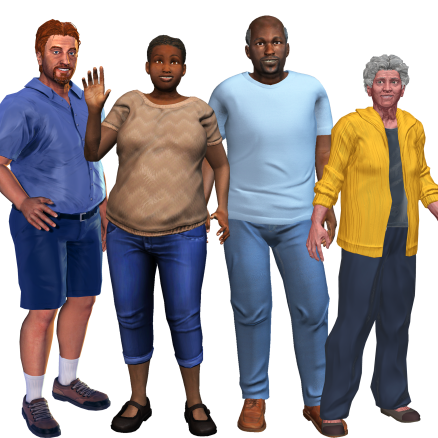I have worked in higher education for over a decade, and I spent an additional five years in private industry developing educational simulation technologies. I have been designing, developing, and researching educational simulations for health professions education since 2012. My wide range of education and experience have prepared me to solve problems with innovative solutions, design educational interventions within tight constraints, and to collaborate with colleagues from diverse disciplines.

Since 2017, I’ve been designing, developing, and researching medical education simulations at the Medical College of Georgia. As the Assistant Dean of MCG Educational Simulation, I have collaborated with faculty from a range of specialties and across the continuum of medical education. In contrast to my work developing virtual standardized patients, I now work primarily with high-fidelity manikins, task trainers, and standardized patient actors.
In 2023, as part of my work on the Technology Committee of the Society for Simulation in Healthcare, I led an international team in the research and development of the TIMMI cognitive aid. The TIMMI is designed to assist in the selection of simulation technologies to more effectively meet identified learning objectives, and is now a published SSH resource.

In 2017, Dr. Matthew Tews and I designed a new simulation activity to provide a formative, individual simulation scenario and debriefing for 192 third-year medical students during the mid-year intersession occurring between their clerkship rotation blocks. We offered the activity again with a new chief complaint and programmatic improvements in 2018. The simulation is designed to promote feelings of patient ownership and facilitate professional identity formation for students while they still remain largely in the periphery of patient care in their clinical education. Because simulation was underutilized previously, a significant amount of time and resources were invested in generating buy-in with stakeholders and developing faculty facilitators during the first year. Based on the evaluation of facilitator debriefing behaviors in 2017, a new modified-GAS model was developed to assist novice faculty in 2018. Students overwhelmingly appreciated the opportunity experience the role of physician in a low-stakes environment, and the mid-year simulation activity is now a recurring event during the third-year intersession. Feelings of patient ownership and professional identity were assessed through content analysis of open-text survey responses in 2017 and focus group transcripts in 2018 and 2019. The documents, reports, and videos below are from the second year of the simulation activity, in 2018.
I spent my formative educational simulation years as the Director of Instructional Design for a startup company that developed virtual standardized patients for nursing, pharmacy, and physician assistant education. From 2012 with only six employees, to 2017 with over sixty, I worked to develop dynamic educational simulations, and valid and reliable assessment instruments. I wrote learning objectives, designed in-game tutorials, mapped competencies, implemented self-reflection activities, conducted needs analyses, constructed conceptual frameworks, collaborated with faculty, developed performance dashboards, and evaluated programs.

My success in virtual standardized patient design depended largely on my ability to communicate complex messages to diverse audiences, data-driven decision-making, project management with a high level of attention to detail, and my passion for health professions simulation. You can find a few examples of my work below.